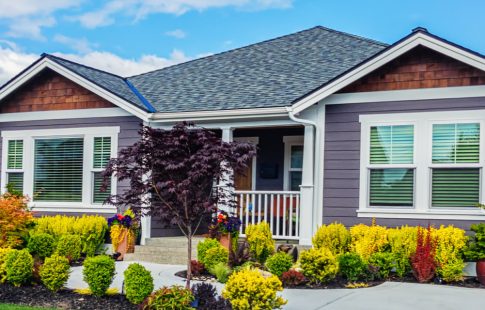Estimated reading time: 4 minutes
Room additions, pool installations, and kitchen & bath renovations have boomed in the pandemic as homeowners’ needs have changed. If you’re thinking about a big home improvement, a cash-out refinance may be a smart way to pay for it. These loans let you walk away from the closing table with a potentially significant amount of money in hand. They also usually offer better interest rates than personal loans, credit cards, and home equity lines of credit (HELOCs). Here’s a look at how cash-out refinances work.
What is a cash-out refinance?
Cash-out refinances are a refinancing option that lets you tap into your home’s equity. If you’re not familiar with home equity, that’s the amount of your home that you own. You can calculate it by subtracting any debts you owe on your house from its market value. For example, if your home is worth $300,000 and you owe $200,000 on your mortgage, you have $100,000 in home equity. Or in simple math, $300,000 – $200,000 = $100,000. It can rise as the real estate market goes up or you pay down your mortgage.
In order to access it, a cash-out refinance replaces your current mortgage with a new home loan that has a higher balance. That balance goes up because it includes equity you can cash out. So, if you needed $40,000 for a kitchen remodel and still owed that $200,000 on your mortgage, you could potentially refinance to a $240,000 loan.
How much equity can you cash out?
Many homeowners can cash out 75–90% of their equity depending on their loan type and the state where the property is located. Other factors that can influence the amount you qualify for include your credit score, debt-to-income-ratio, and mortgage payment history.
What are the pros for home renovations?
One of the biggest benefits of a cash-out refinance is that it lets you to take advantage of mortgage rates, though cash-out refinance rates are usually slightly higher than rates for other mortgage refinances. This can provide major savings over other financing options such as credit cards. The median credit card interest rate was 19.24% in November of 2020, according to Investopedia.
Other pros include:
- Your investment will go back into your home, and if you choose the right home improvement, your home value may increase.
- You can spread your renovation’s cost over your loan term, e.g., 30 years if you refinance to a 30-year mortgage. (But you’ll also pay added interest which will raise the overall cost of your renovation.)
- Your mortgage interest may be tax deductible. Personal loan and credit card interest is not.
- Your mortgage payment may go down depending on factors such as your loan term, mortgage rate, and whether your new mortgage is for less than your original loan.
- If you’re currently paying PMI (private mortgage insurance), you can remove it if your new loan doesn’t exceed 80% of your home’s value.
What are the cons?
It’s important to choose your home improvements wisely when you do a cash-out refinance. If you spend too much or home values go down, you could be stuck if you plan to sell your home in the near future. For example, if you refinance to a $275,000 loan for a kitchen remodel, but your home is only worth $250,000 when it’s done, your mortgage will be underwater. Other things to consider include:
- Your mortgage payment may go up and your mortgage balance will be higher.
- You’ll likely have to pay closing costs. They can add 2–5% to your mortgage.
- You may have to pay PMI if you borrow more than 80% of your home’s value. This could add up to 1% to your mortgage each year until the PMI can be removed.
- It may take longer to pay off your mortgage depending on your loan term.
- Unlike other ways to finance a project, a cash-out refinance will be secured by your home.
Ready to learn more? Check out our cash-out refinance resources below or talk with one of our Mortgage Professionals at 833-702-2511. To estimate your potential mortgage payment following a refinance, try our refinance calculator. And for tips on how to find a contractor for your next renovation, see our blog here.
- Mr. Cooper’s Top Cash-Out Refinance FAQs
- 7 Cash-Out Refinance Mistakes To Avoid
- How Does a Cash-Out Refinance Work?
A cash‐out refinance increases your mortgage debt and reduces the equity you may have in your home. Your monthly mortgage payments may be higher.
Tradenames and trademarks used in this blog post are the property of their respective owners. Nationstar Mortgage LLC d/b/a Mr. Cooper is not affiliated, associated, or sponsored by any of these owners. Use of these names and trademarks is not intended to and does not imply endorsement, but is for identification purposes only. Information provided does not necessarily represent the views of Mr. Cooper. Information is subject to change without notice.






